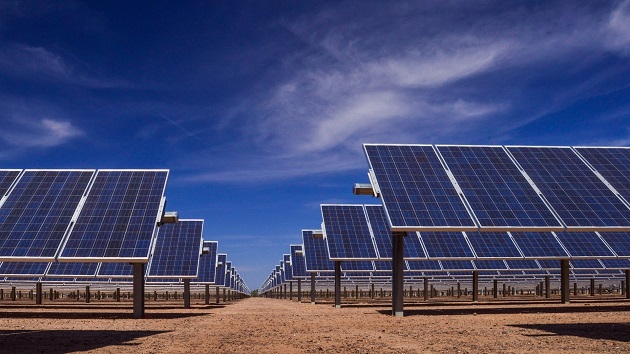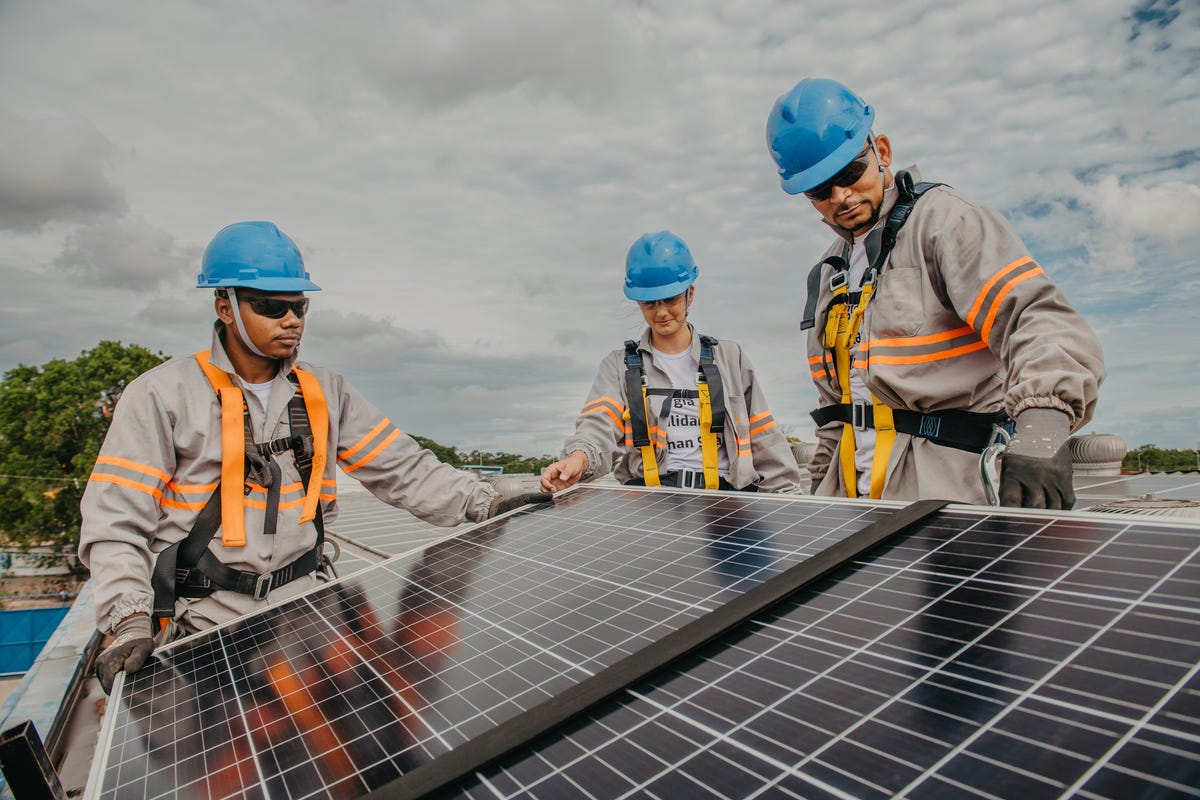Local Solar Companies Virginia: Lumina Solar Specializes In Offering Advanced Photovoltaic Solutions For Houses And Organizations
History and Establishing
Have you ever questioned how a solar panel company springs from a simple spark of motivation into a powerhouse of renewable resource? It often begins with a vision-- one fueled by a mix of innovation, decision, and a pinch of serendipity. The journey of many solar business mirrors the development of the innovation itself: from bulky, ineffective panels to sleek, high-efficiency marvels utilizing the sun's bounty.
The Early Days
In the late 20th century, when solar power was still a specific niche principle, pioneers planted seeds for what would become a worldwide movement. Envision a small workshop filled with curious engineers, relentlessly try out photovoltaic cells. Their enthusiasm was palpable, typically driven by a desire to fight climate change and reduce reliance on fossil fuels.
One such anecdote is about a creator who, inspired by a camping journey, recognized click here that even in remote areas, the sun could power necessary devices. This simple observation stimulated a company's mission to democratize access to tidy energy.
Founding Concepts

- Innovation: Continuously pushing the limits of solar innovation to improve performance and toughness.
- Sustainability: Dedicating to eco-friendly production and reducing carbon footprints.
- Ease of access: Making sustainable energy services budget friendly and useful for daily users.
Milestones in Growth
| Year | Key Event |
|---|---|
| 1985 | Business established in a little garage, focusing on research and development. |
| 1995 | First business solar panel item released, acquiring local attention. |
| 2005 | Broadened to international markets, embracing global renewable resource goals. |
| 2015 | Introduced innovative solar panel innovation with boosted energy conversion. |
Isn't it fascinating how these incremental steps, often neglected, form the energy landscape today? The solar panel business story is not practically innovation; it has to do with a relentless quest for a brighter, cleaner future.

Innovations in Solar Panel Technologies
Ever discovered how some photovoltaic panels shine brighter and last longer? It's not magic; it's the science of photovoltaic performance. Modern solar panel companies invest greatly in technologies like bifacial cells, which catch sunlight from both sides, enhancing energy harvest without expanding roofing area. Have you ever wondered why some panels perform better on cloudy days? That's due to advances in thin-film solar innovation, which grows under diffused light conditions.
Product Variations Tailored to Special Requirements
One size never ever fits all. Photovoltaic panel suppliers now use:
- Monocrystalline panels for optimum efficiency and streamlined looks, ideal for space-constrained rooftops.
- Polycrystalline panels, which provide a cost-effective alternative without compromising excessive output.
- Building-integrated photovoltaics (BIPV), combining solar tech flawlessly into architectural components like windows and facades.
Selecting the right item isn't practically in advance cost; it's about matching your environment, energy objectives, and long-lasting cost savings. For instance, homes shaded by trees need panels that master low-light scenarios, something lots of neglect up until energy expenses climb all of a sudden.
Technical Tips for Ideal Selection
- Evaluate the temperature coefficient-- lower worths suggest panels lose less performance on hot days.
- Search for panels with improved anti-reflective finishings to maximize light absorption.
- Consider the panel's guarantee not just for problems, but for guaranteed power output over decades.
- Do not ignore the value of the inverter technology coupled with the panels; it can make or break your system's efficiency.
Beyond Panels: Emerging Patterns
Picture photovoltaic panels that change their angle instantly to go after the sun-- tracking systems are becoming more accessible, increasing yield significantly. Or solar tiles that mix invisibly into your roofline, changing your home into a quiet, self-dependent power generator. These developments are reshaping what a solar panel business offers-- not simply products, however integrated energy options.
Market Existence and Global Operations
Ever question why some solar panel business seem to sprout up in every corner of the world while others hardly make a ripple? The distinction lies not just in innovation however in mastering the art of browsing diverse markets. Expanding globally is like planting seeds in various environments-- you should understand each environment's special conditions to prosper.
Take, for example, the complex dance of logistics and supply chain management. Delivering panels halfway across the world isn't almost distance; it has to do with timing, customs, tariffs, and adapting to regional demand variations. A business with robust global operations expects these variables, guaranteeing panels show up on schedule without pumping up costs. This insight is no little accomplishment and typically separates market leaders from fans.
Secret Strategies for Expanding Market Existence
- Localized manufacturing: Establishing production hubs near target audience decreases shipping delays and import complexities.
- Strategic partnerships: Collaborating with local companies accelerates market penetration and develops trust.
- Adaptive product design: Tailoring solar panel tech to weather, sun intensity, and infrastructure subtleties enhances performance and approval.
What about the human aspect? Solar panel business running internationally should reconcile cultural distinctions and regulatory subtleties without losing sight of their core mission. What works in a sun-drenched desert might falter in a damp coastal area. Sometimes, the most ingenious solution is just listening-- taking in local insights to refine technology and method.
Professionals typically advise a phased rollout instead of a shotgun expansion. Why risk overextension when determined growth builds sustainable momentum? Scaling wisely indicates balancing aspiration with functional resilience - Solar Panel Company Virginia. After all, in the race for sustainable energy dominance, perseverance can be as important as speed
Ecological Effect and Sustainability Practices
When solar panels initially emerged, many assumed they carried zero environmental luggage. Nevertheless, the reality is more nuanced. The production of solar batteries includes rare earth metals and energy-intensive procedures, which can leave a substantial carbon footprint before the panels even reach roofs. Yet, the real environmental cost depends greatly on the sustainability practices utilized by the solar panel business throughout the lifecycle of their products.
How typically do we pause to consider what happens to solar panels at the end of their beneficial life? Unlike batteries or electronic devices, solar panels can last 25-30 years, however disposal and recycling paths stay underdeveloped in many regions. A business committed to decreasing ecological harm will have a robust prepare for recycling photovoltaic products, restoring valuable silicon, glass, and metals to avoid land fill build-up.
Secret Sustainability Methods
- Using low-impact manufacturing methods that decrease water and energy usage.
- Implementing closed-loop systems to recycle production waste back into brand-new panels.
- Participating in transparent supply chain audits to guarantee ethical sourcing of raw products.
- Creating panels for easier disassembly to aid future recycling efforts.
It deserves keeping in mind that some solar business have pioneered ingenious techniques, such as integrating naturally degradable elements or using less harmful chemicals throughout fabrication. This not only minimizes ecological strain however likewise sets a precedent for the industry. The question stays: can the solar industry genuinely pivot towards a circular economy design without sacrificing performance or cost?
Professional Tips for Evaluating Sustainability
- Ask about the company's dedication to carbon-neutral production and whether they offset emissions.
- Examine if they partner with certified recycling facilities dedicated to photovoltaic panel waste.
- Try to find openness reports detailing environmental impacts and sustainability goals.
- Consider the durability and warranty of panels as an indirect procedure of resource performance.
In the end, opting for solar power ought to suggest more than simply slashing electrical power costs; it has to do with supporting a future where energy is collected properly and waste is thoughtfully handled. Solar panel companies that accept this approach not only brighten homes however also cast a brighter light on sustainable innovation.